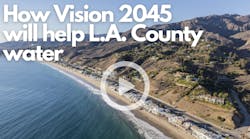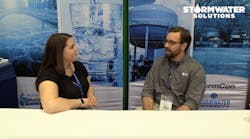The U.S. Environmental Protection Agency’s (EPA) NPDES storm water program was put in place to help protect the nation’s water supply from the effects of storm water runoff or non-point source pollution. Entities responsible for storm water discharge have to apply for an NPDES permit and adhere to EPA-mandated regulations for storm water management. One of the mandates requires permitees to implement programs for public education and outreach, focusing on pollution prevention.
Marking storm water inlets with “no dumping” messages was an early method of compliance. Volunteers painted the messages using stencils. This delivered a message and could be done with community involvement. However, there were drawbacks. Painting is messy and time consuming, and it often led to complaints about “graffiti.” The paint also would wear off and wash down the drains into the water sources it was designed to protect. As a result, communities began to look for alternatives.
In Hillsborough County, Fla., Julia Palaschak of the county’s storm water management section used painted stencils with her early public education efforts. After evaluating alternatives, Palaschak chose a marking system made by das Mfg. Inc. The markers can be permanently affixed to most flat surfaces, including concrete and asphalt, using das Adhesive. They are easy to use, highly visible, and can be manufactured in a variety of shapes, sizes and colors. The company was able to provide test data and long-term durability information, as the markers have been in use since 1983. The markers also were Americans with Disabilities Act-compliant for slip resistance.
Although there are different methods of marking and developing a marking program, much can be learned from programs already in place. Networking with counterparts and obtaining information and referrals from manufacturers is the first step.






